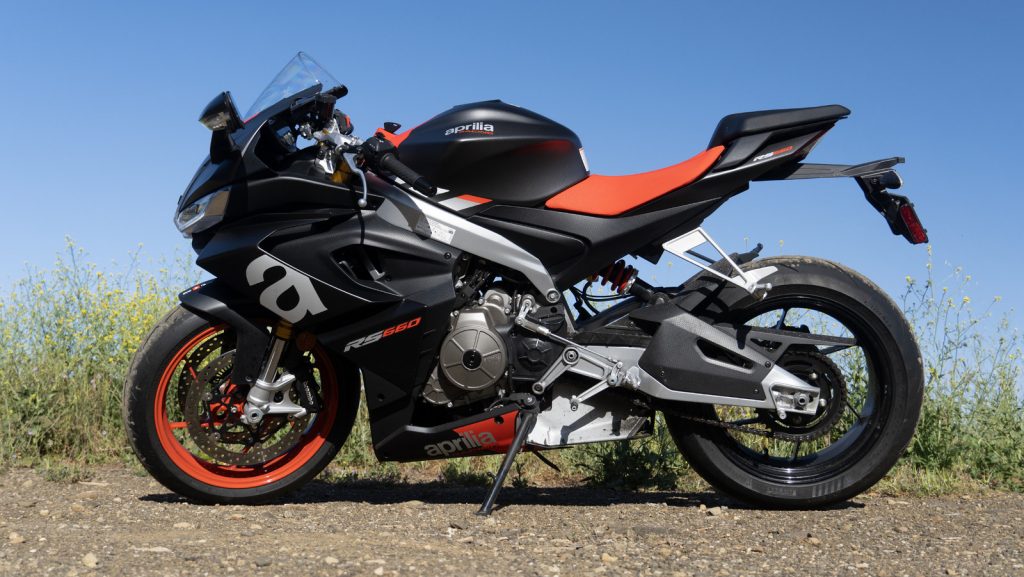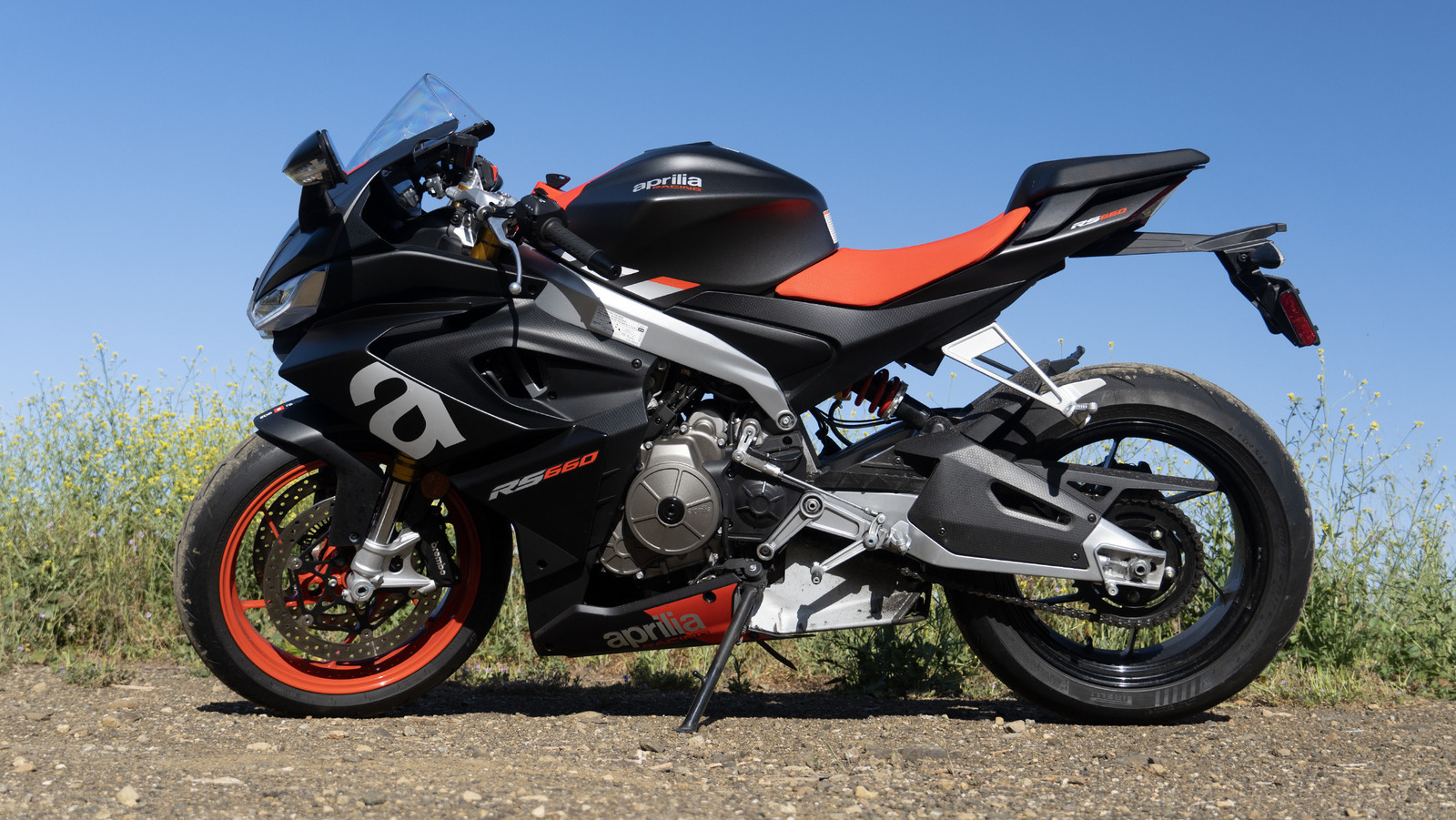
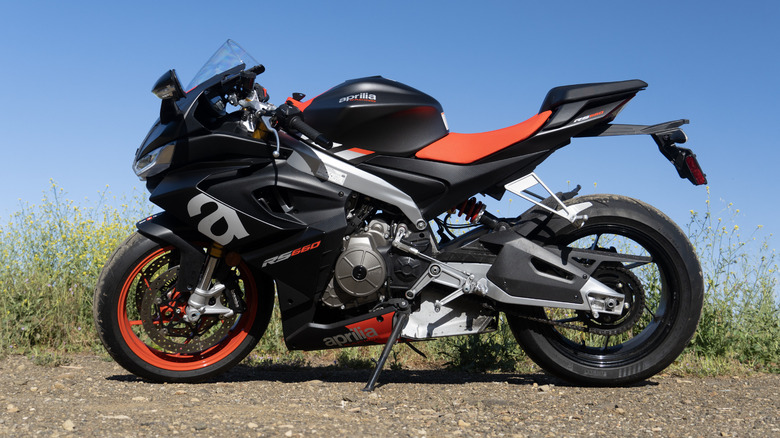
Michael Teo Van Runkle/SlashGear
EDITORS’ RATING : 9 / 10
- Torquey and high-revving 660cc parallel twin
- Lightweight and low-slung geometry
- Positive feel for shifters and controls
- Affordable entry price with solid standard features
- Could use a bit more power to satisfy speed freaks
- Posture may be uncomfortable for many riders
I swing my leg over the high tail of an Aprilia RS660 in front of Moto Club Santa Monica. Multiple drivers stuck in bumper-to-bumper traffic watch me the whole time and this is my first true sport bike, so a bit of nerves almost start to set in. Well, to be fair, I learned how to ride on the road with a Kawasaki Ninja 400 after a childhood on dirt bikes—the Ninja is a great little tool for beginner lessons, but a far cry from this piece of Italian exotica.
I never should have felt a moment’s concern. The high seat, low bars, aggressive fairings, and perfectly spaced pegs just feel right immediately. All of a sudden, it hits me: I’ve driven by Moto Club SM a million times since I was a kid and every time, eyed a sparkling line of lean, mean machines parked across from O’Reilly’s. Today I get to ride one.
Much more than straight-line speed
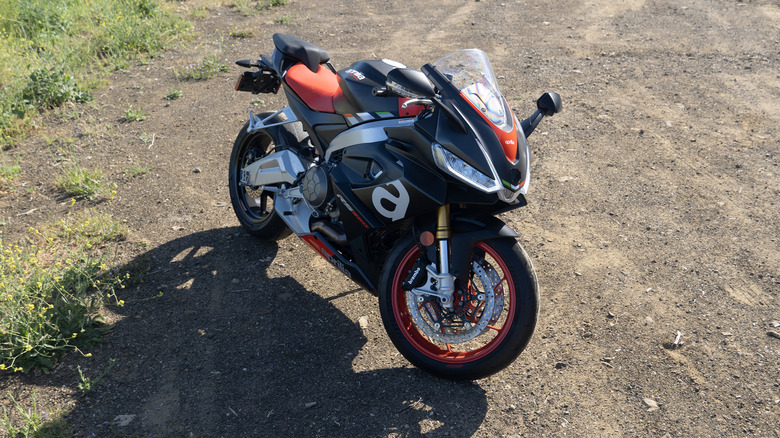
Michael Teo Van Runkle/SlashGear
The RS660 serves as Aprilia’s Ducati Panigale V2 fighter, a svelte scalpel with a 660cc parallel twin and a dry weight of only 366 pounds, or 403 pounds ready to ride. That’s a solid 10% less than the Panigale V2, savings that Aprilia prizes over the more larger and more powerful 955cc Superquadro’s significant power advantage. Power-to-weight ratios compete in exponential fashion, the reasoning goes, so there’s more going on in this battle than just all-out straight-line sprinting.
The RS660 also sports more aggressive aero versus the iconic Ducati fairings and a much more aggressive entry price, with a starting sticker of $11,499. But all the numbers in the world mean nothing as I pull away from the curb, weight on my forearms and knees tucked in tight for the ride home. Within a few blocks, I know this bike intimately. As a professional writer, I can’t help but abhor the laziness of the only way I can describe the sensation: This is the first time a modern motorcycle has really felt like what I always imagined a bike should feel like.
Each ride over the next two weeks is a revelation, as I gain confidence in tire traction while leaning and countersteering, shifting my weight together with the bike to find the flow immediately on any kind of meandering road. Somehow the act of bracing against the RS660’s lower grip through tight corners pairs perfectly with throttle modulation and power delivery and gearshifting and braking and… I need to know why. So for the first time, I take a real deep dive into some of the engineering details that make this bike stand out so much from the rest.
An ecstatic engineering lesson
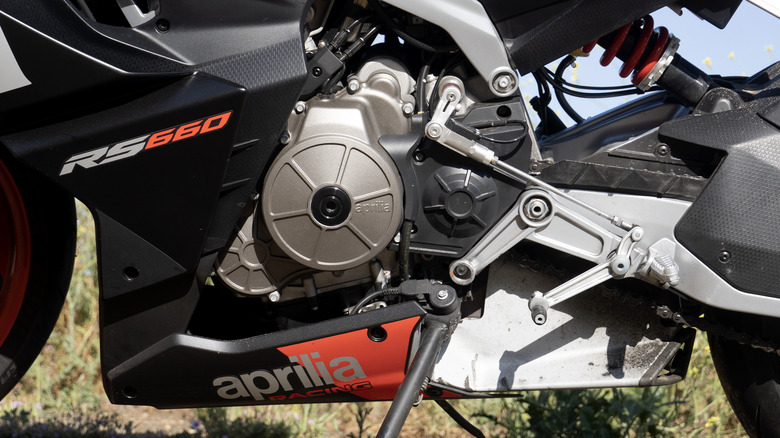
Michael Teo Van Runkle/SlashGear
Of course, the first and easiest questions to answer surround the motor, a parallel twin derived from the 1100cc V4 on Aprilia’s larger bikes and delivering 100 horsepower at 10,500 rpm on the way to an 11,500 rpm redline. For a smaller displacement two-cylinder, those numbers sound good but not great—so a max torque rating of 49 lb-ft at 8,500 rpm, with 80% of peak available at only 4,000 rpm, probably helps explain why I never feel underpowered among cars on the freeway or carving through the Malibu hills.
Perhaps more importantly, the engine serves as a load-bearing member, with the rear swingarm directly attached to allow more weight to cradle lower in the frame for a better center of gravity. Now throw on a pair of 41-millimeter Kayaba forks with upside-down stems at a 24.1-degree inclination (aka rake). All of the above combined with a 1,370mm wheelbase and an 820mm seat height contributes to a marriage between heft and geometry that perfectly pairs with my body, long-limbed with a short torso—the opposite of typical Italian design, at least when it comes to Ferraris and Lamborghinis.
In town, the seat position and sporty bars lead to a low riding posture, without a doubt. But I’m also a road cyclist accustomed to the most aggressive carbon-fiber frames, so I actually find the position more natural than sitting upright—again, both in traffic and while riding aggressively. Meanwhile, the tactile elements of the RS660 remind me of my Campagnolo Super Record cycling components: a stiff but confident gearshifter, perfect pressure and feedback for the clutch lever, excellent bite from the 320mm front and 220mm rear Brembo brakes. The rear brakes use a seriously beefy hydraulic master cylinder, rather than a direct cable, for ideal resistance during hard nose-heavy braking action.
Keep it short and simple
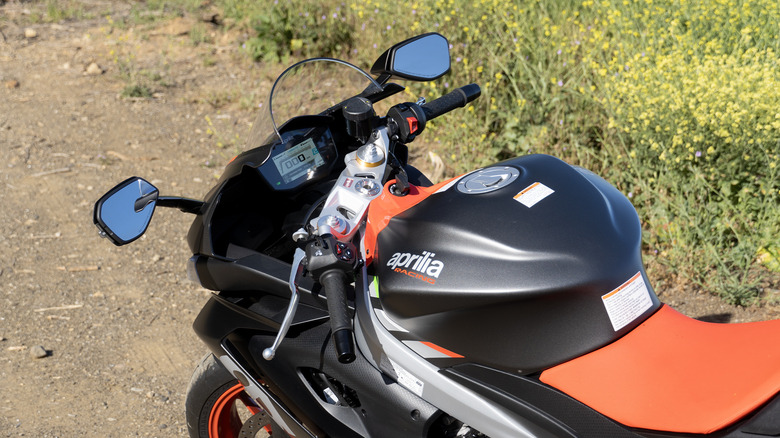
Michael Teo Van Runkle/SlashGear
A simple gauge screen with basic handlebar controls contribute to the RS660’s clear focus on riding, but that’s not to say this entry-level bike lacks in creature comforts, either. Configurable riding modes come standard, even cruise control. The minimal windscreen actually does a good job, too. If this bike were mine, I’d fiddle with the clutch and brake levers to move them closer to the grips for even more precision, swap on a tail tidy and remove the rear pillion pad, maybe stick some smallish grips on the ergonomic fuel tank (not bad at for 3.96 gallons).
What would I definitely not change? The exhaust, for one. The RS660 emits a more complex symphony of sounds beyond just a big bark with each crank of the throttle. (Plus, the stock exhaust keeps my neighbors happy when I’m playing bike Tetris in my garage late at night.) Even idling at stoplights, though, an irregular combustion soundtrack of the 270-degree offset valve timing contributes to a vague unconventional aura. Then while tooling around at low speeds, the little twin’s pounding heart audibly inhales through dual intake ducts feeding 48mm throttle bodies. Only up towards 8,000 rpm or so, when the engine wakes up noticeably, does the exhaust progress into a screaming cacophony—but never quite enough to overwhelm the other sensory inputs.
Lowslung and lightweight performance without the premium pricetag
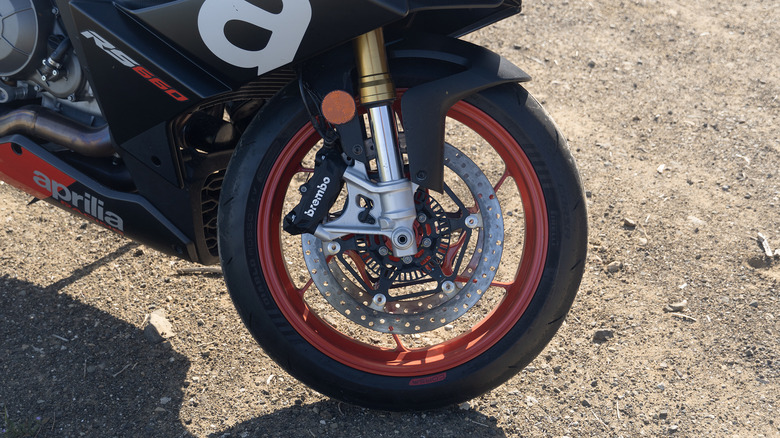
Michael Teo Van Runkle/SlashGear
Especially stepping back from the fully electric Zero SR/S in my garage at the same time, or the Honda CB500X—neither of which directly compete with the RS660, I know—the Aprilia deftly delivers that fun factor, the ideal stimulation of all senses on a lower and leaner machine that feels so light all of a sudden. And no rattling dry clutch necessary to remind me what’s going on below me, simply just the best all-round bike in my life yet.
Speed freaks might complain about 100 horsepower not being enough, sure, but the low-slung weight allows me to carry more speed with more confidence than ever before, and I never once felt unable to walk away from busy traffic. Playing with the ride modes—Commute, Dynamic, and Individual—adjusts the traction control, wheelie control, engine braking, and engine mapping with a few clicks of little buttons on the right and left grips. Only the quickshift stood out as perhaps not the greatest or smoothest, though in reality, I rarely used it because I preferred to, you know, manually shift gears myself. (Of note, the RS660’s gearbox can be reversed for GP-style shifting without requiring any addition parts or modules, unlike Ducati’s.)
Aprilia RS660 Verdict
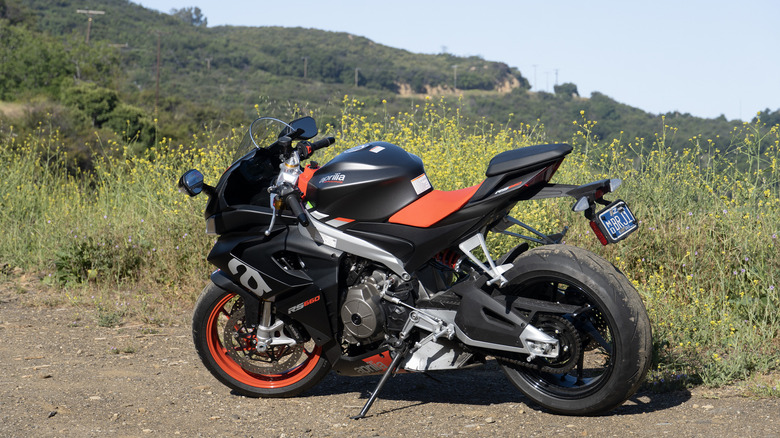
Michael Teo Van Runkle/SlashGear
Now, in the spirit of full disclosure, I will admit that my triceps got a little sore after a two-plus-hour ride, but a bit of a workout would probably do me good anyway. And I never found the opportunity to test out the cruise control, but did far more lane splitting through the West LA traffic that deterred me from doing so because, if I need to say it again, I just felt confident on such a light, nimble, and narrow bike. Always jumping to the front of the line at stoplights means less time to sit up, which means more strain on the arms—but sometimes I do enjoy earning my fun.
The RS660 also costs far less than a Panigale V2, which stickers at $18,595. Honda’s CBR600RR might be a more apt competitor, but gets a four-cylinder engine with more power from fewer cubic centimeters, which contributes to a bit more weight. Same goes for the Suzuki GSX-R600 and Kawasaki Ninja ZX-6R. And none deliver the same exotic appeal, much less the perfect balance between form and function. New for 2023, the RS660 receives a track-only Trofeo edition that might just entice me onto a closed circuit to truly take my skills to the next level. The road bike, meanwhile, only gets new colors—but so few model year revisions hint at the recipe for Aprilia’s secret sauce, which needs absolutely nothing else to leave me simply smitten.
